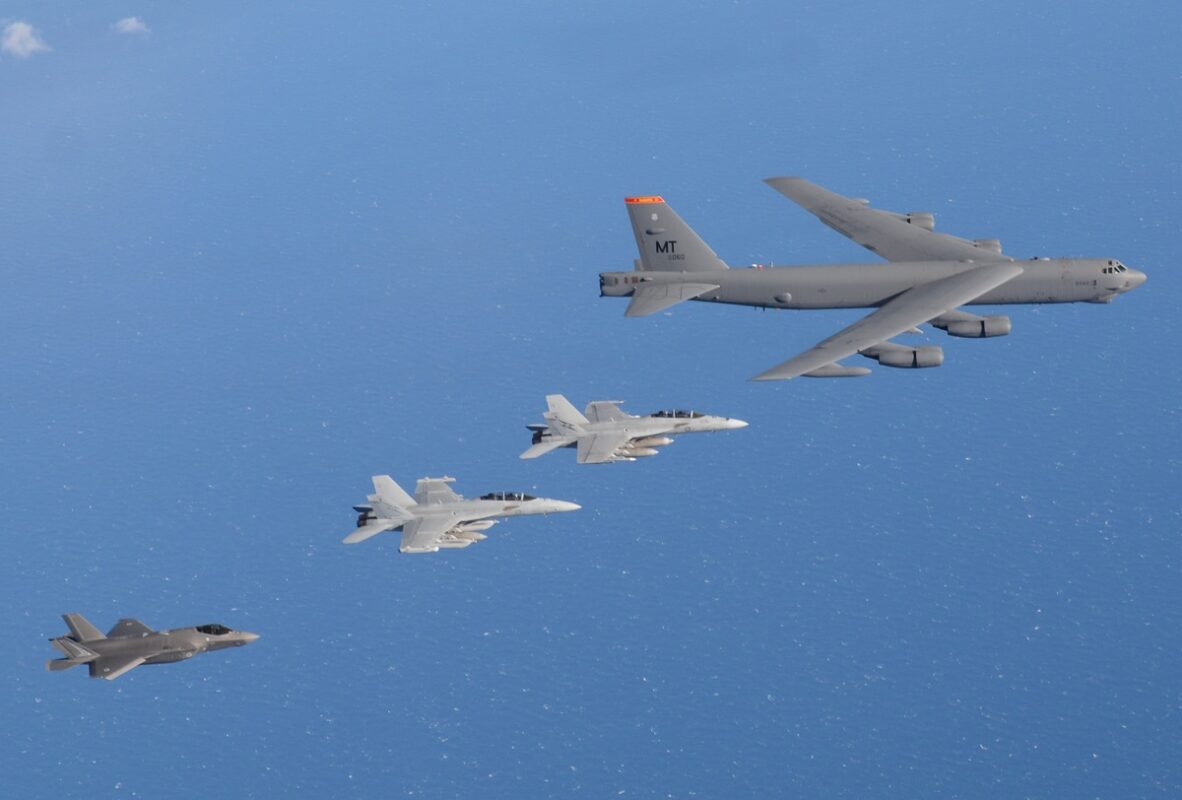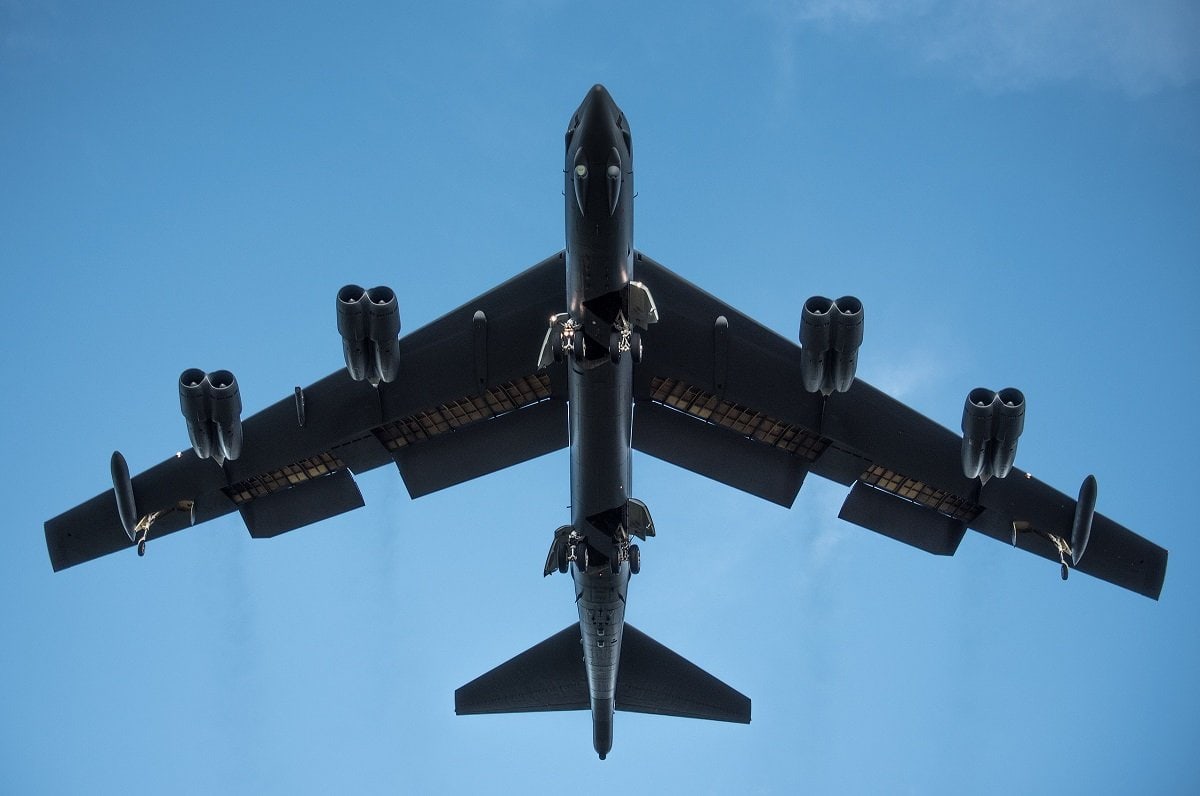The United States Air Force B-52H Stratofortress bomber continues to fly high around the world, and the Cold War aircraft have been updated and upgraded and remain ready to fulfill its role as the foundation of the Global Strike bomber triad. The long-range, heavy bomber has in recent months been deployed to the Indo-Pacific, near the Arctic in Norway and even has been used to support the withdrawal of U.S. forces in Afghanistan.
Last month, a B-52H took part in the Talisman Sabre 2012 (TS21) joint exercise between the United States military and Australia Defence Force (ADF) that is held every two years. This year more than 17,000 troops from the U.S. and Australia as well as five other partner nations – including Japan, Canada, the Republic of Korea (South Korea), the United Kingdom and New Zealand – participated in the recently conducted exercises, which ran from July 14 until July 31.
That particular B-52 launched from Andersen Air Force Base (AFB), Guam and flew several thousand miles, spending near an entire day in the air, to complete its mission – which involved conducting bombing runs on a variety of targets. Along the way, the bomber was escorted by a F/A-18F Super Hornet, noted for having the distinctive kangaroo roundel visible of the Royal Australian Air Force (RAAF) below its front cockpit.
“Flying together with our RAAF allies sends a clear message that we can and will fight as a team,” said U.S. Air Force Lt. Col. Roy Lohse, bomber liaison officer at RAAF Base Amberley.
Honing its Skills in Talisman Sabre
The large-scale TS21 bilateral military exercise allows for more than routine training.
“TS21 offers a unique opportunity for our strategic bomber force to prepare for the challenges of power projection across the vast distances of the INDOPACOM area of responsibility,” said Lohse.
In addition to being escorted by the RAAF’s Number 1 Squadron F/A-18F, the U.S. Air Force’s 185,000 pound bomber was also accompanied by an RAAF EA-18G from No. 6 Squadron and even an F-35A Lightning II from No. 3 Squadron. The aircraft were able to fly just feet apart, but it was almost second nature to the pilots; the result of combined training over months and years, but also the result of high levels of interoperability.
This exercise was an example of that focused training.
“Exercise Talisman Sabre 2021 provides Pacific Air Forces personnel and assets a realistic training environment where we can build trust and interoperability with our allies from across the Indo-Pacific region,” said U.S. Air Force Col. Barley Baldwin, 13th Air Expeditionary Group commander.
“These relationships are vital for insuring a free and open Indo-Pacific, and it is great to come back and see so many of our hosts, our tremendous Aussie friends, that I’ve worked with over the years,” added Baldwin. “The enduring relationships, mateship, and trust make building our interoperability much easier.”
According to the Indo-Pacific Command, the exercise is crucial to the seamless integration between allies, and supports the U.S. National Defense Strategy by enhancing the abilities of not only the B-52 crew but all of the participants.

Royal Australian Air Force aircraft No.6 Squadron (SQN) EA-18G Growler, a No.1 SQN F/A-18F Super Hornet and from No.3 SQN, a F-35A Lightning aircraft, fly alongside a United States Air Force B-52 Stratofortress aircraft from the 69th Expeditionary Bomb Squadron based at Guam, during Exercise Talisman Sabre 2021. (Photo credit: SGT Andrew Eddie 464SQN AFID-AMB)
“TS21 showcases our ability to deliver capable, combat-ready, lethal airpower on short notice to any corner of the world alongside our tremendously capable partners and allies,” said Baldwin.

